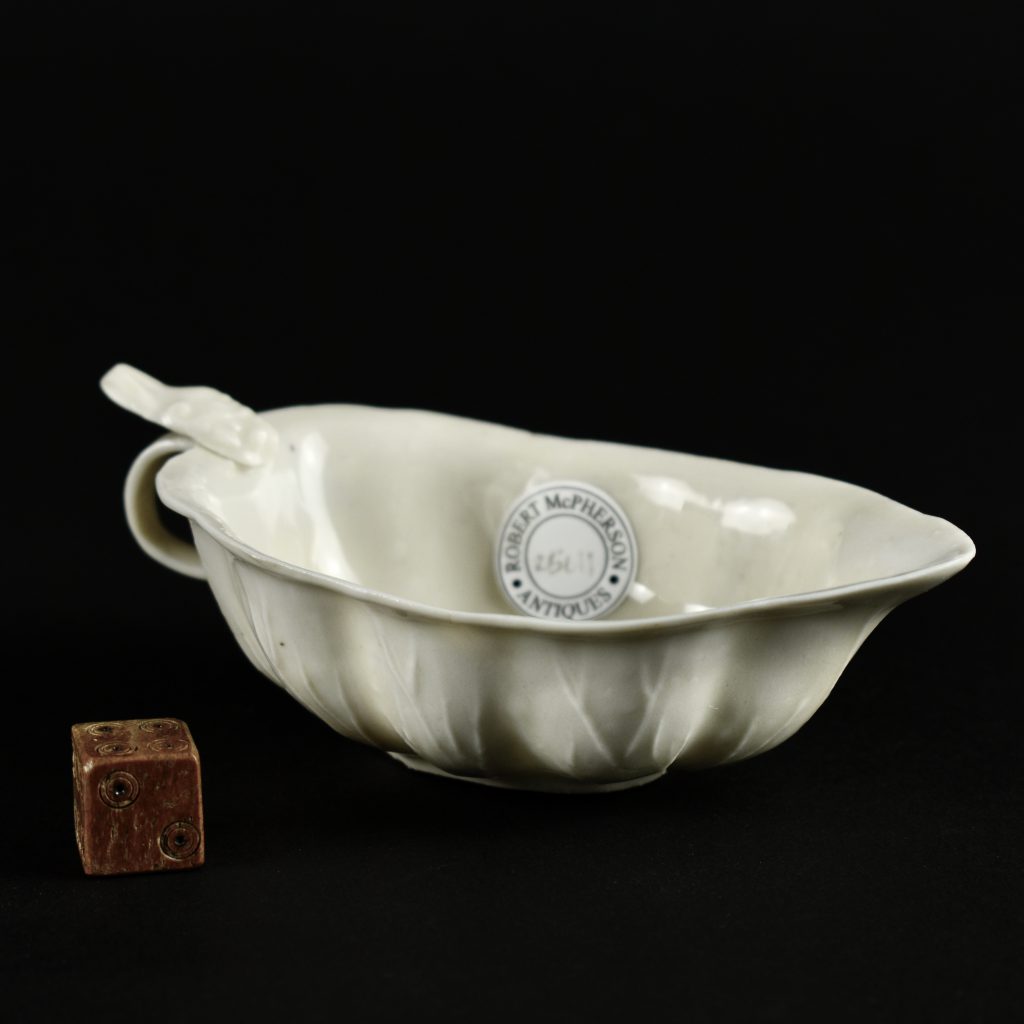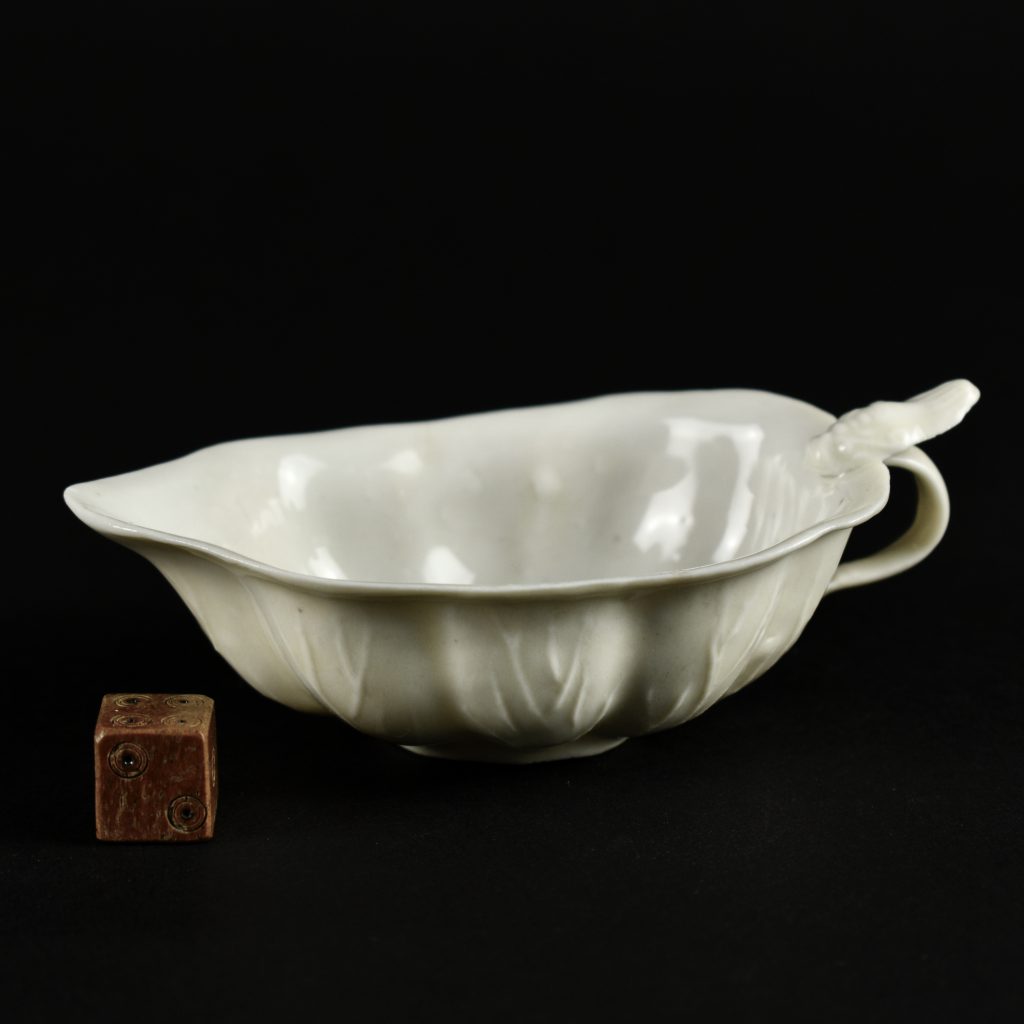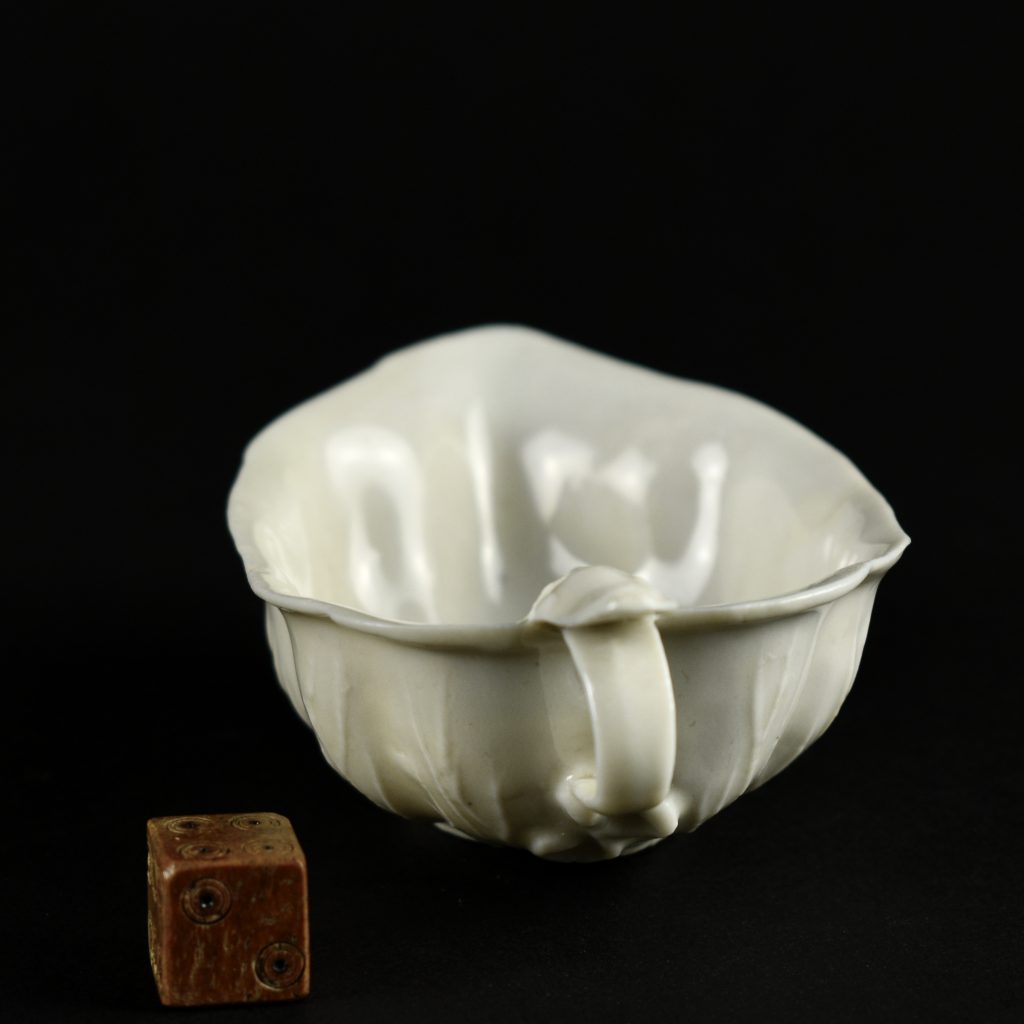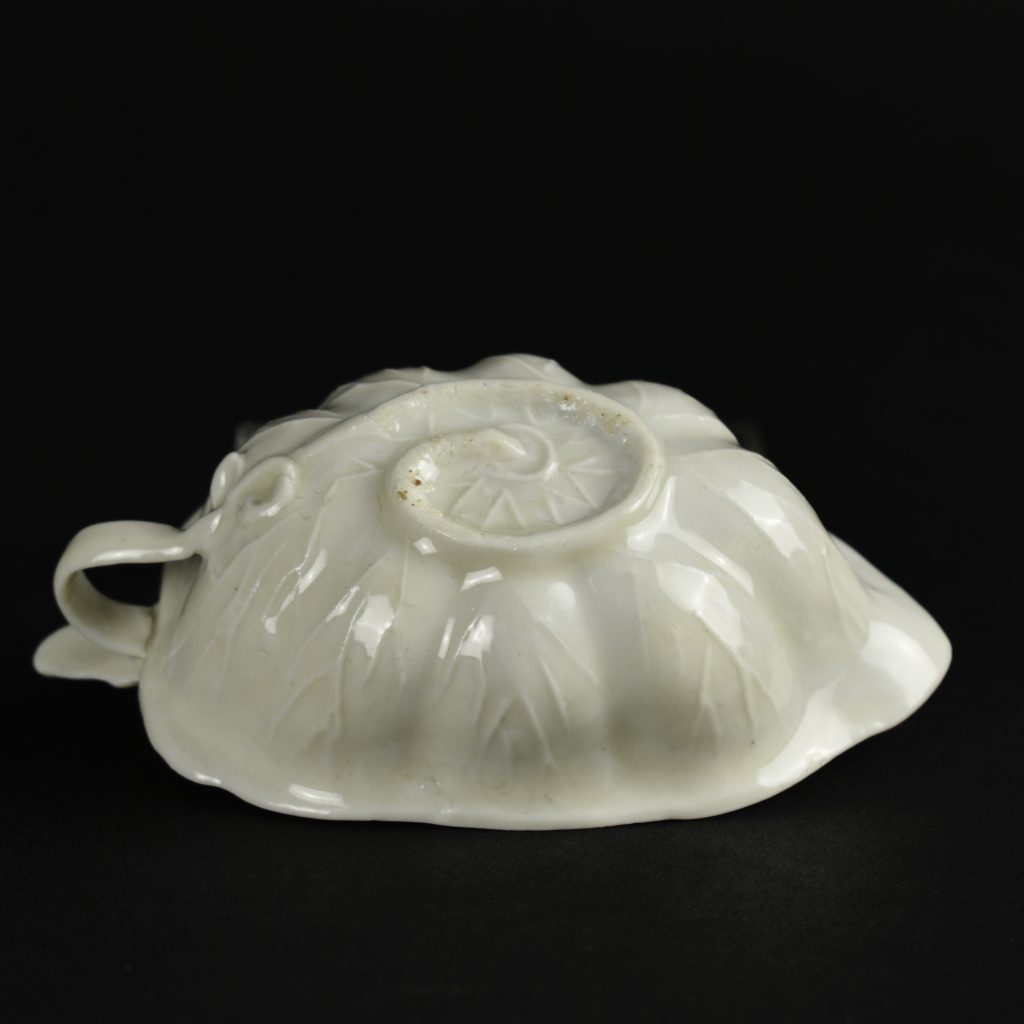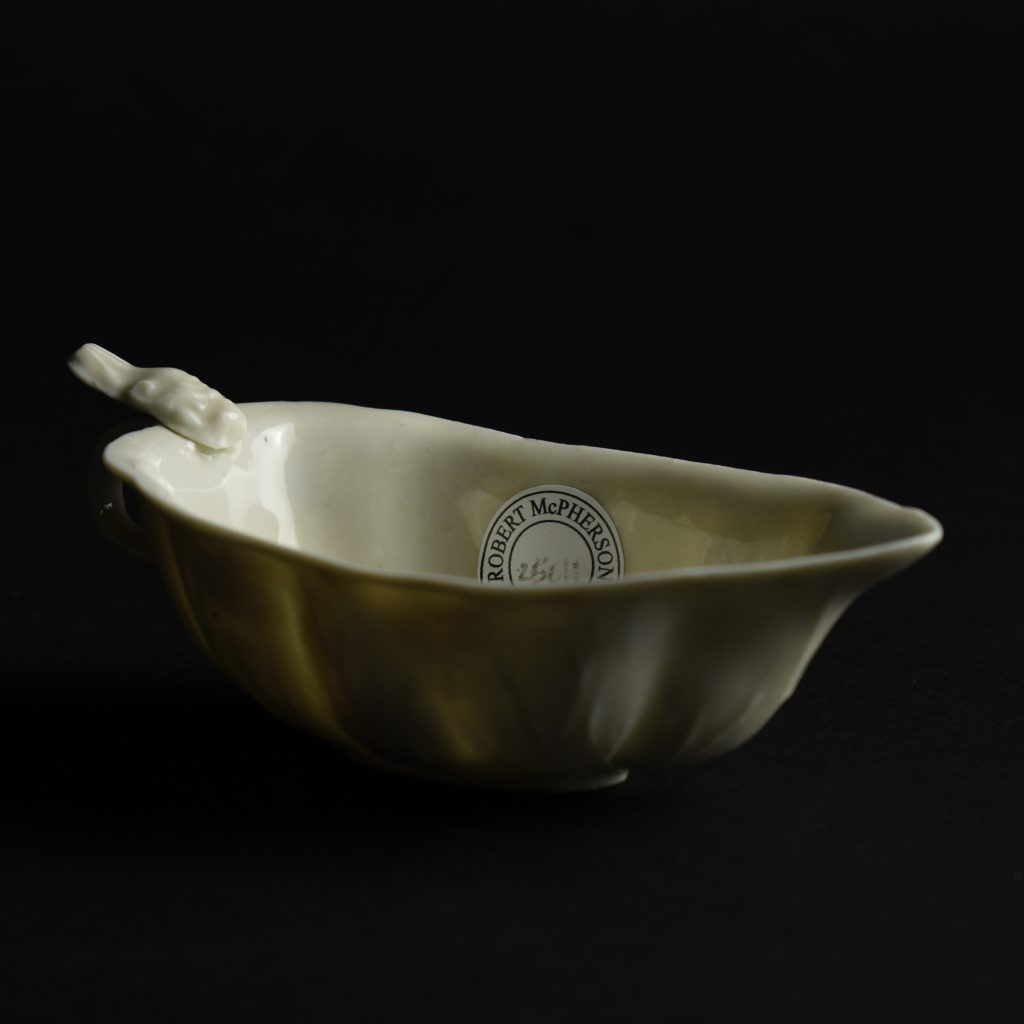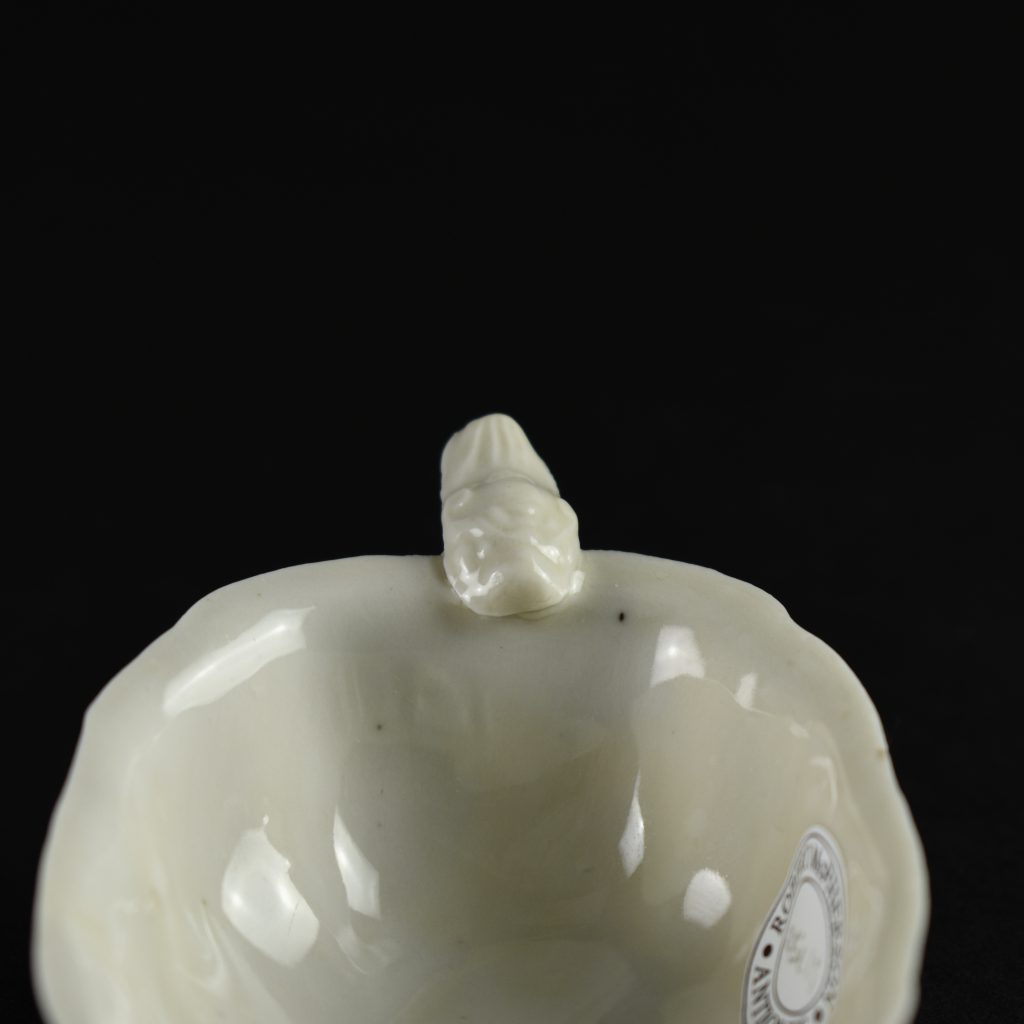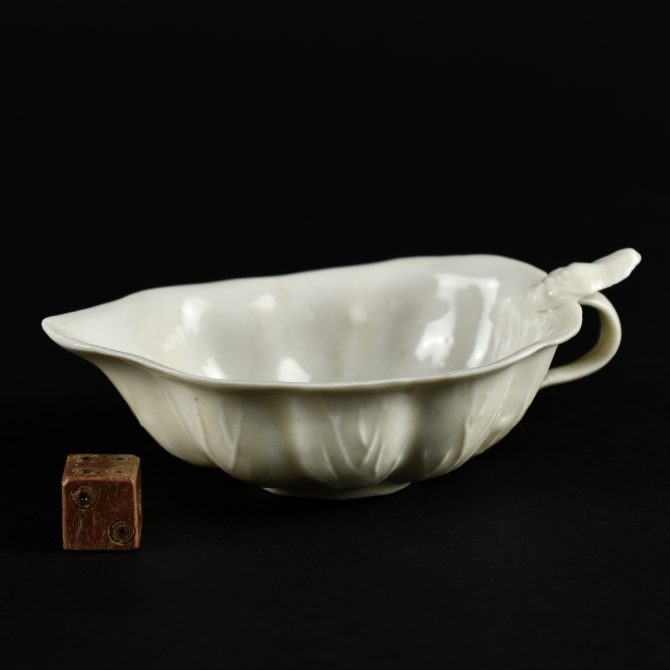
A Kangxi Blanc de Chine Porcelain Brush-Washer
An Unusual Kangxi Blanc de Chine Porcelain Lotus Leaf Form Brush Washer, Dehua Kilns, Fujian Province. Very finely potted from a mould, the exterior of this piece shows details of the veins on the reverse of the lotus leaf. The handle is of a stylised dragon, the thumb rest being the dragons head, the bifurcated tail issues from the handles terminus. Leaf-shaped Blanc de Chine porcelain brush-washers of this type were novelty items for the Chinese scholar`s desk, part of a range of object for the scholar that includes items such as ink-stones, wrist-rests, brushpots and small vases. However, these small Chinese leaf-shape porcelain objects were also seen as desirable novelties in the West too, they were imported in small quantities as ‘Private Trade’.
SOLD
- Condition
- In excellent condition. A minute rim frit to the spout c.1 mm. Firing faults : a firing crack to the edge, this is filled with glaze, a tiny brown mark to the rim, this appears to be where the glaze didn't take. A small firing fault to the well and another to the handle.
- Size
- Length 10.3 cm (4 inches)
- Provenance
- From a Private American Collection.
- Stock number
- 25611
Information
Blanc de Chine Leaf-Dishes :
Leaf-shaped Blanc de Chine porcelain brush-washers of this type were novelty items for the Chinese scholar`s desk, part of a range of object for the scholar that includes items such as ink-stones, wrist-rests, brushpots and small vases. However, these small Chinese leaf-shape porcelain objects were also seen as desirable novelties in the West too. Their function and symbolism were lost. Separated from their Chinese cultural surroundings, but their delicacy and beauty would have been admired irrespective of their original function or any symbolism they were meant to convey to the owner. They would though have had an oriental exoticism that would have enhanced the interest of a Kunstkammer or a collection of porcelain such as that owned by Friedrich Augustus I (1670-1733), Augustus the Strong, Elector of Saxony and King Augustus II of Poland. Very similar leaf-shaped dishes were made at his Meissen porcelain factory, in fact they were made of Böttger stoneware as well as early white Böttger Meissen, all were based on the Blanc de Chine originals belonging to Augustus the Strong himself. The stoneware copies date to around 1710-1715 and white porcelain ones from about 1720 onwards. Many other 18th century European porcelain factories made similar shaped dishes, but it is I think, very difficult to know whether these were based on the Chinese originals or the Meissen copies.
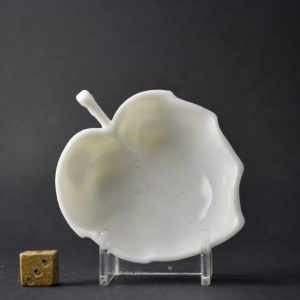

Blanc de Chine Porcelain
The porcelain known in the West as Blanc de Chine was produced 300 miles south of the main Chinese kiln complex of Jingdezhen. The term refers to the fine grain white porcelain made at the kilns situated near Dehua in the coastal province of Fujian, these kilns also produced other types of porcelain. A rather freely painted blue and white ware, porcelain with brightly coloured `Swatow` type enamels as well as pieces with a brown iron-rich glaze.
However it is the white blanc de Chine wares that have made these kilns famous. The quality and colour achieved by the Dehua potters was partly due to the local porcelain stone, it was unusually pure and was used without kaolin being added. This, combined with a low iron content and other chemical factors within the body as well as the glaze, enabled the potters to produce superb ivory-white porcelain.
